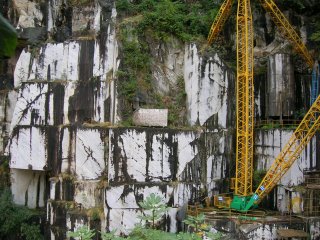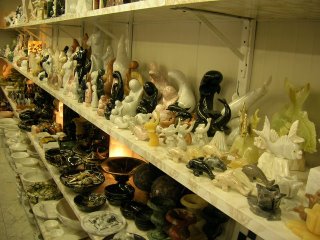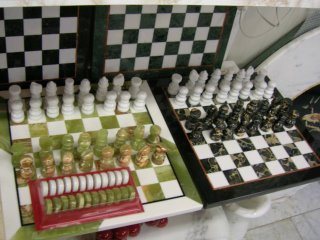
The minerals of the Carrara marble are among the most known italian minerals. What characterize these minerals is the perfection of the shape of the crystals, the incredible trasparence and sharpness. Among the best minerals we have fantastic quartz crystals, perfectly shaped. The beauty of these minerals is highlighted also by the white marble matrix that increases and amplifies the colors and the shape of the minerals. . HistoryThe Carrara marble quarries have been exploited since more than 2000 years. Carrara marble is very famous for the statuary quality, used by all the most famous sculpturers in the world ( Michelangelo, Canova, etc.). The first peak of extractive activity was in the roman period, during the imperial age the demand for Carrara marble rose since it became the most requested building stone for public buildings. Since then Carrara was a synonymous of marble and its marble was requested worldwide for buildings, statues, objects, etc. Till now, about about one million tons of Carrara marble are quarried each year GeologyFrom the geological point of view the area belongs to the autoctonous part of the tuscanian appennines. The Apuane area is a "tectonic window", in which the alloctonous ligurid terrains are not present and the original basement of the area outcrops. In particular The apuan marble formation is lowermost jurassic in age and is composed of limestones having a typical saccaroidal texture due to metamorphic recrystallisation.The colour is usually white but may contain variable gray banding in places. The most pure limestones fully recristallised are very famous as "statuario" marble. Most of the monuments and the masterpieces of the world art are sculptured in this marble. Two tectonic phases are recognizable in the Apuane area : the last one consisted in a low grade matamorphic folding, in which the cavities and fissures where there are the main cristallisations of the carrara marble formed. How to reach the research areaTo reach the research area is extremely simple: arriving at Carrara, in noth Tuscany, all the quarry area is well visible. Almost three hundred of little or large quarries are present in Carrara area.The most important for crystallisations are Fantiscritti quarry,La Facciata quarry and Fossa degli angeli, where is possible to find some interesting minerals. Since the extractive activity is not so much developed nowadays , the possibility of some good finding is relatively low... anyway, something is still foundable, depending on the luck. MineralsThe crystals are foundable in the cavities, normally not opened, but recognizable due to the larger grain size of the crystals of the matrix, to a different colour of the rock or to the presence of coarse grained calcite. The presence of these characteristics is detrimental for the quality of the marble, sol normally the blocks where is possible to find the minerals and the cavities are spoilages of the extractive activity. The characteristic of the Carrara minerals id due to the white marble matrix and to the small quantities of accessory minerals. The crystals are well developed isolated crystals rather than confused aggregates.Over than 70 species have been described from the Apuane mineralogy. Most of the minerals are of very small dimension ( few mm ) but absolutely perfect . The contrast with the white matrix, then gives an absolute evidence to these minerals.One of the most famous mineral is wurtzite , a variety of sphalerite sphalerite in a lot of different colors, from yellow, to honey, to green, red and brown. Probably among the most famous crystals are the quartz crystals, very perfect. The crystals are very transparent and always colorless. Perfectly double terminated crystals are not rare, The crystals generally show perfectly flat and shiny faces: this is the reason of the uncommon brightness of Carrara quartz crystals. Dolomite, in very brilliant crystals, with the typical brightness Calcite, in nice and well formed crystals, generally rhomboedronsGypsum, in white to transparent crystals of nice shapeFluorite, generally in absolutely transparent cubes, passing to whitePirite crystals in very shinig and brilliant cubesSulphur in perfect and brilliant transparent crystalsAlbite in nice crystals, generally tabular .


My favorite chessboards


No comments:
Post a Comment